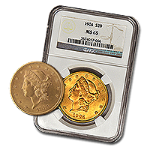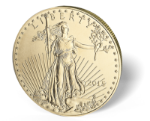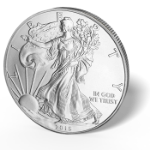You’ve read about it, and we’ve written about it in recent posts: gold’s value and sustainability is being questioned. The metal has slipped below the $1600 per ounce mark multiple times this spring. Some people are panicking and selling off their gold investments, while some are waiting to see what will happen. Other people are taking advantage of the low prices and buying as much gold as they can. So what should you do?
According to a 2013 forecast by Money Morning, you should do the latter: buy as much gold as you can, right now. The reason is, according to the forecast, gold will set record breaking gains this year. The forecast predicts that gold could reach as high as $2,200 per ounce this year. We cannot say for sure whether that will actually happen, but no matter where gold ends up, the fact remains the same: gold prices are low at the moment, and in all likelihood, will grow higher this year.
Gold has seen gains of over 565% since the early 2000s. That is a huge increase in a relatively short period of time. Look back even further, the price of gold in 1968 was only $35! Compare that to the “low” price of around $1500 today. By the mid-1970s, the metal was priced around $200, but dropped below $100 a few years later, causing many frustrated investors to dump their gold supply (sound familiar?). However, by 1980, it was back up to $800, and the patient people who held onto their gold were seeing the value of their persistence.
In just 12 years, anyone who had bought gold for $35 an ounce had seen more than a 20x increase on their investment. If history has taught us anything, it is that gold periodically sees periods of loss, but those that are able to tough it out are rewarded with sharp value increases.
Back to the present day…why do some experts believe gold will see strong gains this year, despite its slow start? First, countries are printing money at a faster rate than new gold is being discovered. Inflation drives gold value up. Also, gold demand is up globally, especially in the populous nations of China and India. While demand is increasing, supply is decreasing. Gold is a finite thing; there is only so much of it in the world, and when supply runs out, prices will likely skyrocket. Lastly, central banks continue to buy and hoard gold, which is a good indicator that people should as well.
Gold will likely never see the $35 an ounce price again, but investing in gold now could very likely produce similar results to those that were lucky enough to buy gold back in 1968.











